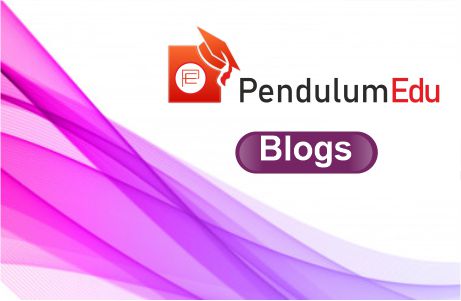Highlights of Union Budget 2020-2021
2020-02-01 | Team PendulumEdu
Today on 1 February 2020, Union Finance Minister Nirmala Sitharaman presented the Union Budget 2020-21 in the Loksabha. The Key highlights of the union budget are summarized below:

The budget in India is presented by the Finance Minister on the first day of February since 2016. The budget contains Annual Financial Statement (Article 112), Demands for Grants (Article 113), Finance Bill (110 a), Macro-Economic Framework Statement and Medium-Term Fiscal Policy cum Fiscal Policy Strategy Statement as per Fiscal Responsibility and Budget Management Act (FRBM), 2003.
Government combined Railway Budget with General Budget in 2016. Railway Budget was presented separately since 1924. The separation of the Railway Budget was recommended by the Acworth Committee of 1921. James Wilson presented the first budget in India on February 18, 1860. Budget 2020-21 is the 73rd budget of independent India. After independence, the first union budget was presented on 26 November 1947. It was presented by independent India’s first Finance Minister, R. K. Shanmukham Chetty. Morarji Desai has presented the maximum number of budgets (10).
Key highlights of budget 2020:
- Three themes of the Budget- Aspirational India, Economic Development for all, Caring Society.
- The government aims to provide the seamless delivery of services through Digital Governance.
- Proposal to build National Infrastructure Pipeline.
- The focus is on risk mitigation through Disaster Resilience.
- More pension and insurance penetration to enhance social security.
- In Budget 2020-21, the government has increased the turnover threshold limit for audit of accounts of MSMEs to ₹5 crores.
- Rs. 100 lakh crores will be invested by the government on infrastructure over the next 5 years.
- National Logistics Policy will be launched soon to clarify the roles of governments and key regulators.
- The government will provide 1.70 lakh crore rupees for transport Infrastructure in 2020-21.
- For power and renewable energy sector, Rs. 22, 000 crores allocated for 2020-21.
- Rs. 1.60 lakh crores have been allocated for Agriculture, Irrigation & allied activities and Rs. 1.23 lakh crores have been allocated for rural development and Panchayati Raj.
- Ministry of Civil Aviation will launch Krishi Udaan.
- One District One Product for better marketing and export in the Horticulture sector.
- Rs. 69,000 crores have been allocated for the Healthcare sector.
- Rs. 3.6 lakh crore approved for Jal Jeevan Mission while Rs. 12,300 crores have been allocated for Swachh Bharat Mission.
- For the education sector and skill development, Rs. 99,300 crores and Rs. 3000 crores have been allocated respectively.
- In the Budget 2020-21, Rs. 27,300 crores have been allocated for the development and promotion of Industry and Commerce.
- Investment Clearance Cell has been proposed to provide end to end facilitation and support.
- National Technical Textiles Mission to be set up for four years i.e., 2020-21 to 2023-24.
- New Scheme NIRVIK will be launched for higher export credit disbursement
- Rs. 35,600 crores have been allocated for nutrition-related programmes for the year 2020-21.
- Rs. 28,600 crores have been proposed for women-specific programs while Rs. 53,700 crores proposed for the development and welfare of Scheduled Tribes.
- Rs. 85,000 crores have been allocated for the welfare of SCs and OBCs while Rs. 9,500 crores will be provided for 2020-21 for senior citizens and Divyangs.
- Rs. 2500 crores have been allocated for promoting tourism while Rs. 3150 crores have been proposed for the Ministry of Culture.
- 5 Archaeological sites i.e. Rakhigiri (Haryana), Hastinapur (UP), Shivsagar (Assam), Dholavira (Gujarat), and Adichanallur (TN) will be developed as iconic sites with on-site Museums.
- An Indian Institute of Heritage and Conservation with a status of a deemed university under the Ministry of Culture has been proposed.
- Museum on Numismatics and Trade to be located in the historic Old Mint building in Kolkata.
- Maritime Museum will be established at Lothal- the Harappan age maritime site near Ahmedabad.
- Rs. 4400 crores have been allocated for the environment and climate change for 2020-21.
- Launch of Coalition for Disaster Resilient Infrastructure (CDRI) by PM Narendra Modi with the secretariat in Delhi.
- National Recruitment Agency (NRA) to be set up for conducting online exams to recruit for non-gazetted posts in governments and PSBs.
- To promote the use of the latest technologies including Artificial Intelligence, New National Policy on Official Statistics has been proposed.
- 10 banks have been consolidated into four and Rs. 3,50,000 crore capital has been infused in Public Sector Banks so far.
- The government will sell part of its holding in LIC through IPO.
- Governance reforms have been proposed to improve the working of Public Sector Banks.
- Some Public Sector Banks to be marked to approach the capital market to raise additional capital.
- The amount of insured deposits to be increased from 1 lakh to 5 lakh/ depositor as to be given by Deposit Insurance and Credit Guarantee Corporation (DICGC).
- Banking Regulation reforms to strengthen the Cooperative Banks.
- The eligibility limit of NBFC for debt recovery reduced from INR 500 crore to 100 crore in assets size and INR 1 crore to 50 lakh loan size.
- The government has decided to sell IDBI bank to private, retail and FPIs.
- To deepen the corporate bond market, the FPI (Foreign Portfolio Investment) limit has increased from 9 to 15%.
- Debt-based Exchange Traded Fund has expanded by new Debt- ETF, for government securities.
- An International Bullion exchange (s) to be set up as an additional option for trade by global market participants with the approval of the regulator.
- The nominal growth of GDP for FY 2020-21 has been estimated at 10%.
- The Revised Fiscal Deficit for the year 2019-20 has been estimated at 3.8% and the Budget Estimate is 3.5% for the year 2020-21.
- The Budget Estimate of 2020-21 for the capital expenditure has been kept at more than 21% and thus a large part is to be dedicated towards that.
- About 70 exemptions related to income tax are to be removed to simplify tax compliance.
- There is an extension of 15% Corporate Tax Rate to electricity generation companies.
- The Dividend Distribution Tax has been removed to attract investment in the country.
- Start-ups having turnover up to 100 crores are to be provided with a 100% tax deduction for the 3 consecutive assessment years out of 10 years.
- In the case of MSMEs, the organizations having turnover less than or up to 5 crores and carrying out less than 5% business transactions in cash are exempted from the compulsory audit. Earlier this limit was 1 crore turnover.
- Like companies are exempted from Minimum Alternate Tax, the cooperative societies are exempted from Alternate Minimum Tax.
- The time limit for additional deduction over the interest (INR 1.5 lakh) on the loan taken for affordable housing has been extended till March 31, 2021.
- The tax structure is as follows:
|
Taxable Income Slab (Rs.) |
Existing Tax Rates |
New Tax Rates |
|
0-2.5 lakh |
Exempt |
Exempt |
|
2.5-5 lakh |
5% |
5% |
|
5-7.5 lakh |
20% |
10% |
|
7.5-10 lakh |
20% |
15% |
|
10-12.5 lakh |
30% |
20% |
|
12.5-15 lakh |
30% |
25% |
|
Above 15 lakh |
30% |
30% |
- The individuals earning up to Rs. 5 lakhs shall not pay any tax.
- Vivad Se Vishwas scheme has been started to reduce direct tax litigations with the deadline of March 31, 2021.
- Online Facility of instant PAN allocation through Aadhaar.
- Facilitation of faceless appeal by amending the Income Tax Act.
- Unique Registration Number to be issued for all the existing and new charity institutions.
- CBDT or Central Board of Direct Tax to adopt a Taxpayers’ charter.
- Dynamic QR code for capturing GST parameters directly from the consumer invoices being.
- Return filing being made simplified with the facility of SMS based filing for nil return and improved income tax credit flow to be on a pilot run from April 1, 2020.
- High Custom Duty on some goods like auto parts, chemicals, etc, to promote and protect domestic production.
- Lower custom Duty on some inputs and raw materials like fuse, chemicals, etc.
- An amendment under the Customs Act has been brought to enable the check on imports under Free Trade Agreements.
- There is a proposal for the rise in excise duties on Cigarettes and other Tobacco products. However, there is no change made in the excise duties over beedi manufacturing.
- To promote the textile sector, the anti-dumping duty on Purified Terephthalic Acid (PTA) has been abolished.
Share Blog





Comments